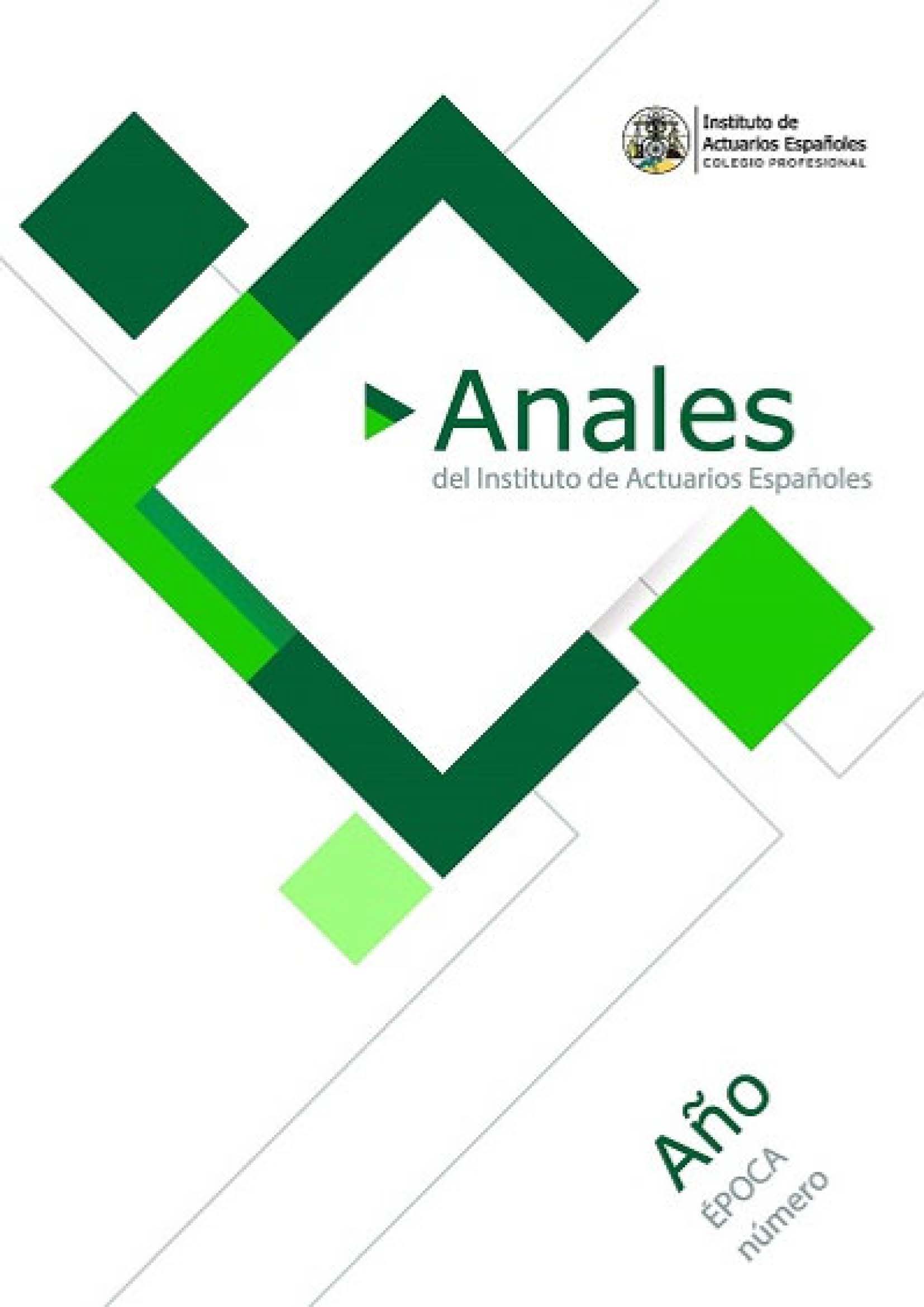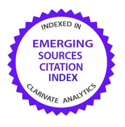Understanding confidence in Banks: the role of personal characteristics and Artificial Intelligence
DOI:
https://doi.org/10.26360/2024_03Keywords:
financial institutions, artificial intelligence, survey analysis, bankingAbstract
Confidence in banks and financial institutions is a cornerstone of financial stability and economic prosperity. This study investigates the relationship between personal characteristics and confidence in banks, recognizing the pivotal role of trust in shaping individuals' perceptions of financial institutions. Through a mixed-methods approach combining survey techniques and artificial intelligence modelling, we analyse data collected from a representative sample of the university community. Our findings highlight the significant influence of demographic factors such as age, gender and education level on confidence in banks. Moreover, we validate our hypothesis using metrics such as ROC Area and PRC Area, indicating the predictive power of personal characteristics in determining confidence in banks. The sensitivity analysis further elucidates the relative importance of different predictors in shaping confidence levels. The implications of our research extend to policymakers, financial institutions and researchers, offering insights for tailored interventions, customer engagement strategies, and future investigations. By deepening our understanding of the drivers of confidence in banks, this study contributes to the enhancement of financial stability and consumer trust in the banking sector.
Downloads
References
Andrade, J. L., & Valencia, J. L. (2021, December). Modeling lapse rates using machine learning: a comparison between survival forests and cox proportional hazards techniques. Anales del Instituto de Actuarios Españoles, 27, 161-183. https://doi.org/10.26360/2021_7
Andres, C., Betzer, A., Doumet, M. (2021): Measuring changes in credit risk: The case of CDS event studies, Global Finance Journal, 49, 100647. https://doi.org/10.1016/j.gfj.2021.100647
Andros, S., Akimova, L., & Butkevich, O. (2020). Innovations in management of banks deposit portfolio: structure of customer deposit. Marketing & Management of Innovations, (2). https://doi.org/10.21272/mmi.2020.2-15
Angelov, P. P., Soares, E. A., Jiang, R., Arnold, N. I., & Atkinson, P. M. (2021). Explainable artificial intelligence: an analytical review. Wiley Interdisciplinary Reviews: Data Mining and Knowledge Discovery, 11(5), e1424. https://doi.org/10.1002/widm.1424
Attwal, K. P. S., & Dhiman, A. S. (2020). Exploring data mining tool-Weka and using Weka to build and evaluate predictive models. Advances and Applications in Mathematical Sciences, 19(6), 451-469
Bhardwaj, A., Mishra, S., & Jain, T. K. (2021). An analysis to understanding the job satisfaction of employees in banking industry. Materials Today: Proceedings, 37, 170-174. https://doi.org/10.1016/j.matpr.2020.04.783
Bigné, E. (2020). Teaching in business administration: a customized process driven by technological innovations. Journal of Management and Business Education, 3(1), 4–15. https://doi.org/10.35564/jmbe.2020.0002
Bouallègue, Z.B., & Richardson, D.S. (2022). On the ROC Area of Ensemble Forecasts for Rare Events, 27(5), 787–796. https://doi.org/10.1175/WAF-D-21-0195.1
Chauhan, J. S., Kaushal, D., & Pais, R. (2023). Factors Determining the Bank Selection Criteria of Consumers: A Banking Customers Survey. European Economic Letters (EEL), 13(1), 286-291. https://doi.org/10.52783/eel.v13i1.169
De Leon, M. V., & Tubay, J. B. (2020). Ethical leadership of supervisors and internal social capital in a financial institution. International Journal of Economics and Business Administration. https://doi.org/10.35808/ijeba/462
Ekström, J., Åkerrén Ögren, J., & Sjöblom, T. (2023). Exact Probability Distribution for the ROC Area under Curve. Cancers 15, 1788. https://doi.org/10.3390/cancers15061788
El Fouki, M., Aknin, N., & El Kadiri, K. E. (2019). Towards an improved classification model based on deep Learning and nearest rules strategy. Campus Virtuales, 8(1), 111-119. http://www.uajournals.com/campusvirtuales/journal/14/9.pdf
Goulet Coulombe, Ph. (2024). The macroeconomy as a random forest. Journal of Applied Econometrics (early view). https://doi.org/10.1002/jae.3030
Hammond, P., & Opoku, M.O. (2023). The mediating effect of going concern and corporatereporting in the relationship between corporate governance and investor confidence in financial institutions. Heliyon 9(10), e20447. https://doi.org/10.1016/j.heliyon.2023.e20447
Henrique, B. M., Sobreiro, V. A., & Kimura, H. (2019). Literature review: Machine learning techniques applied to financial market prediction. Expert Systems with Applications, 124, 226-251. https://doi.org/10.1016/j.eswa.2019.01.012
Huang, F., Xiong, H., Chen, S., Lv, Z., Huang, J., Chang, Z., & Catani, F. (2023). Slope stability prediction based on a long short-term memory neural network: comparisons with convolutional neural networks, support vector machines and random forest models. International Journal of Coal Science & Technology 10 (18). https://doi.org/10.1007/s40789-023-00579-4
Isidro, H., Nanda, D., & Wysocki, P. D. (2020). On the relation between financial reporting quality and country attributes: Research challenges and opportunities. The Accounting Review, 95(3), 279-314. https://dx.doi.org/10.2139/ssrn.3427028
Josephson, J., & Shapiro, J. (2020). Credit ratings and structured finance. Journal of Financial Intermediation, 41, 100816. https://doi.org/10.1016/j.jfi.2019.03.003
Karkošková, S. (2023). Data governance model to enhance data quality in financial institutions. Information Systems Management, 40(1), 90-110. https://doi.org/10.1080/10580530.2022.2042628
Kuchciak, I., & Wiktorowicz, J. (2021). Empowering financial education by banks—social media as a modern channel. Journal of Risk and Financial Management, 14(3), 118. https://doi.org/10.3390/jrfm14030118
Kusi, B. A., Forson, J. A., Adu-Darko, E., & Agbloyor, E. (2023). Global financial crisis, international capital requirement and bank financial stability: an international evidence. Journal of Financial Regulation and Compliance, 31(2), 237-258. https://doi.org/10.1108/JFRC-04-2022-0057
Laeven, L., & Valencia, F. (2020). Systemic banking crises database II. IMF Economic Review, 68, 307-361. https://doi.org/10.1057/s41308-020-00107-3
Lee, S. J., Posenau, K. E., & Stebunovs, V. (2020). The anatomy of financial vulnerabilities and banking crises. Journal of Banking & Finance, 112, 105334. https://doi.org/10.1016/j.jbankfin.2018.04.013
Lei, X., Mohamad, U.H., Sarlan, A., Shutaywi, M., Daradkeh, Y. I., & Mohammed, H.O. (2022). Development of an intelligent information system for financial analysis depend on supervised machine learning algorithms. Information Processing & Management, 59(5). https://doi.org/10.1016/j.ipm.2022.103036
Mangala, D., & Soni, L. (2023). A systematic literature review on frauds in banking sector. Journal of Financial Crime, 30(1), 285-301. https://doi.org/10.1108/JFC-12-2021-0263
Marqués, F. (2020). Machine Learning. Técnicas de Análisis Supervisado: Modelos Predictivos Multiecuacional: Independently Published
Martín, E., & Caballero, R. (2020). Las bases de Big Data. España: Los Libros de La Catarata
Mikhaylov, A., Dinçer, H., & Yüksel, S. (2023). Analysis of financial development and open innovation oriented fintech potential for emerging economies using an integrated decision-making approach of MF-X-DMA and golden cut bipolar q-ROFSs. Financial Innovation, 9(1), 1-34. https://doi.org/10.1186/s40854-022-00399-6
Nasreen, S., Mahalik, M. K., Shahbaz, M., & Abbas, Q. (2020). How do financial globalization, countries? Research in International Business and Finance, 54, 101247. https://doi.org/10.1016/j.ribaf.2020.101247
Ozili, P. K. (2020). Theories of financial inclusion. In Uncertainty and challenges in contemporary economic behaviour, 89-115. Emerald Publishing Limited. https://doi.org/10.1108/978-1-80043-095-220201008
Rice, M. E., & Harris, G. T. (2005). Comparing effect sizes in follow-up studies: ROC Area, Cohen's d, and r. Law and Human Behavior, 29(5), 615–620. https://doi.org/10.1007/s10979-005-6832-7
Russell, R. (2018). Machine learning: guía paso a paso para implementar algoritmos de machine learning con Python: CreateSpace Independent Publishing Platform
Van der Cruijsen, C., de Haan, J., & Roerink, R. (2023). Trust in financial institutions: A survey. Journal of economic surveys, 37(4), 1214-1254. https://doi.org/10.1111/joes.12468
Vanclay, F. (2020). Reflections on Social Impact Assessment in the 21st century. Impact Assessment and Project Appraisal, 38(2), 126-131. https://doi.org/10.1080/14615517.2019.1685807
Witten, I. H., & Frank, E. (2005). Data Mining: Practical Machine Learning Tools and Techniques, Second Edition. Netherland: Elsevier Science
Xu, X. (2020). Trust and financial inclusion: A cross-country study. Finance Research Letters, 35, 101310. https://doi.org/10.1016/j.frl.2019.101310
Yadav, S., & Shukla, S. (2016, February). Analysis of k-fold cross-validation over hold-out validation on colossal datasets for quality classification. In 2016 IEEE 6th International conference on advanced computing (IACC) (pp. 78-83). IEEE. https://doi.org/10.1109/IACC.2016.25
Yego, N.K.K. , Nkurunziza, J., & Kasozi, J. (2023). Predicting health insurance uptake in Kenya using Random Forest: An analysis of socio-economic and demographic factors. Plos One. https://doi.org/10.1371/journal.pone.0294166
Zhang, C., & Lu, Y. (2021). Study on artificial intelligence: The state of the art and future prospects. Journal of Industrial Information Integration, 23, 100224. https://doi.org/10.1016/j.jii.2021.100224
Published
Versions
- 2024-12-13 (2)
- 2024-07-31 (1)
How to Cite
Issue
Section
License
Copyright (c) 2024 Raúl Gómez-Martínez, Benito Pérez-González, María Luisa Medrano-García, Jose Torres-Pruñonosa

This work is licensed under a Creative Commons Attribution-NonCommercial-NoDerivatives 4.0 International License.


















